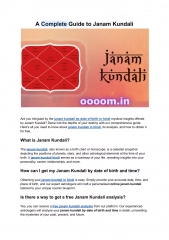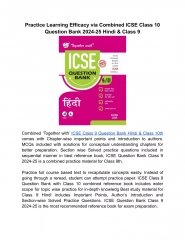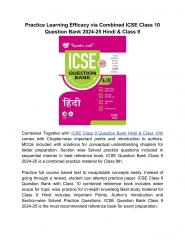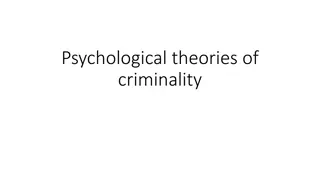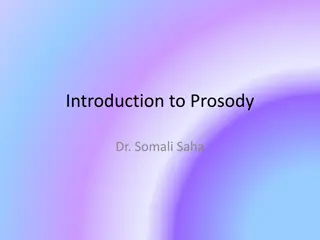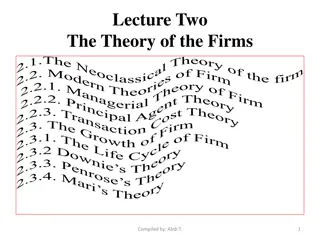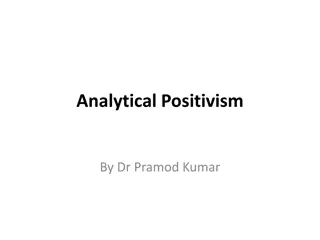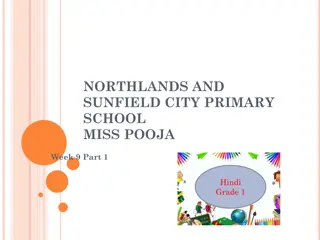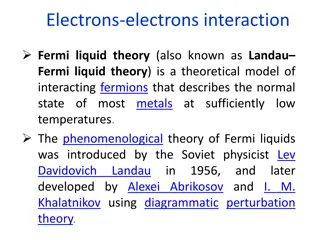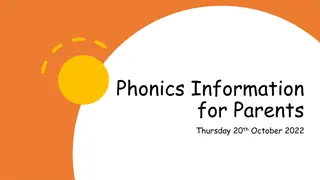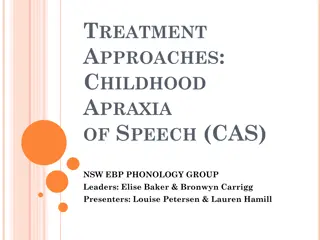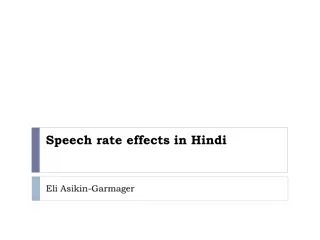Hindi Prosody and Prominence Theory
Examining Hindi prosody through the lens of prominence theory with a focus on accent models, information structure, and the unique features of Hindi/Urdu language system. The study explores how meaning is conveyed through prosody and its interface with linguistic organization.
Download Presentation

Please find below an Image/Link to download the presentation.
The content on the website is provided AS IS for your information and personal use only. It may not be sold, licensed, or shared on other websites without obtaining consent from the author.If you encounter any issues during the download, it is possible that the publisher has removed the file from their server.
You are allowed to download the files provided on this website for personal or commercial use, subject to the condition that they are used lawfully. All files are the property of their respective owners.
The content on the website is provided AS IS for your information and personal use only. It may not be sold, licensed, or shared on other websites without obtaining consent from the author.
E N D
Presentation Transcript
HINDI PROSODY through the lens of PROMINENCE theory Jennifer Cole Northwestern University Funding from NSF BCS12 51343
The prosody (or intonation) puzzle What is the prosodic system of Hindi/Urdu, and (how) is it different from other languages? How does the prosodic system interface with other levels of linguistic organization? What kinds of meaning are expressed through prosody? 18 June 2018 SALA Konstanz 2
18 June 2018 SALA Konstanz 3
1. Prosodic encoding of information structure: Accent models 2. Prosody & IS in Hindi/Urdu: Focus and Word order 3. Variability in the Prosody-IS mapping 4. IS encoding through Prominence relations-- it s more than prosody 5. Hindi/Urdu in a prominence typology 18 June 2018 SALA Konstanz 4
Accent models Early work on English Phrasal accent is assigned to the rightmost stressed word. We saw some good MOVIES. I bought a POODLE. 18 June 2018 SALA Konstanz 5
Accent models Accent marks new information; given information is unaccented. There are MOVIES, and there are good MOVIES. I bought a POODLE, because I ve always wanted a DOG. Chafe, 1976; Halliday, 1967; Bolinger 1961 18 June 2018 SALA Konstanz 6
Accent models Accent marks new information; given information is unaccented: There are MOVIES, and there are GOOD movies. I bought a POODLE, because I ve always WANTED a dog. Chafe, 1976; Halliday, 1967; Bolinger 1961 18 June 2018 SALA Konstanz 7
Accent models A later development: Accent type distinguishes focus type H* for informational focus; L+H* for contrastive focus Pierrehumbert & Hirschberg 1990; Ito & Speer 2008 Q: How was the story leaked? Q: Did Jonah leak the story? A: Terry phoned the reporter. H* L+H* A: Terry phoned the reporter. 18 June 2018 SALA Konstanz 8
Accent models Later yet Prenuclear accent patterns can distinguish focus breadth Prenuclear accent is ok with broad VP focus, but not with narrow Obj focus Selkirk 1995; Breen et al. 2010; Bishop 2017 Q: What did Robert do? Q: What did Robert borrow? A: He [borrowed the SALT]FOC He [borrowed the SALT]FOC A: He borrowed [the SALT]FOC *He borrowed [the SALT]FOC 18 June 2018 SALA Konstanz 9
Selective vs. non-selective accenting Prosodic encoding of IS in English (& German) depends on: Selective assignment of pitch accent a word in any sentence position can be unaccented. An inventory of distinct accent types accent type signals IS condition What happens in a language where nearly every word is accented, and which has a single accent melody? Hindi, Spanish, other languages, too! 18 June 2018 SALA Konstanz 10
Hindi/Urdu intonation Hindi/Urdu exhibits a fixed intonational melody (L*H-) assigned to every accentual phrase (= every content word + following function word, in non-focused conditions) kalaam-ne baahar Pooja ke liiye tasviir banaai Puri (2013) 18 June 2018 SALA Konstanz 11
Eliciting IS conditions (Puri, 2013 thesis) Question prompts determine IS condition of target word. In this study, the target word is the Object, in pre-verbal position. BROAD FOCUS What happened? The man bought a white soap for his wife. Q: kja: h a:? A: a:d mi: ne pni: bi: i: ke l je e:k s fed 'sa:b n kh ri:d a: CORRECTIVE FOCUS Did the man buy a white shirt for his wife? No, the man bought a white SOAP for his wife. Q: [ ] pni: bi: i: ke l je e:k s fed k rt : kh ri:d a:? A: n h [ ] pni: bi: i: ke l je e:k s fed 'sa:b n kh ri:d a: POST-FOCUS/ GIVEN Did the man buy a black soap for his wife? No, the man bought a WHITE soap for his wife. Q: [ ] pni: bi i: ke l je ka:la: sa:b n kh rid a:? A: n h [ ] pni bi: i: ke l je e:k s fed 'sa:b nkh ri:d a: 18 June 2018 SALA Konstanz 12
Findings from some prior studies Study Tested effects of Main findings Patil, et al., 2008 Focus type/Argument: Narrow (Subj.& Obj.) vs Broad Word order: SOV, OSV Focused word: small effects on f0 & duration in SFOV Post-focal compression and shortening No effect of focus breadth on pre-verbal constituent F ry, Pandey, Kentner, 2016 Focus type: (results not reported) Argument: Subject, Object Word order (speaker chosen): SOV,OSV Focused word: small effects on f0, increase intensity in SFOV; no effect on duration Post-focal compression: small effects Genzel & K gler, 2010 Focus type/breadth: Broad vs Contrastive on Adj in Object NP Focused word: effects on f0 and duration Puri 2013 Focus/type/breadth: Broad vs Corrective vs Given (Obj.) Focused word: effects on f0 (focus type); intensity (focus vs. given); duration (focus type) Jabeen, B gel, Butt, 2016 [SpeechProsody] Focus breadth: Contrast-Corrective vs Broad on Verb Word order: SOV, SVO Focus: effect on f0 rise in SVFO; no effect on duration Word order: different f0 effects for SOVFvs SVFO, for Verb and Object 18 June 2018 SALA Konstanz 13
Findings from some prior studies** Study Focus Word order x Focus Patil, et al., 2008 F0, duration F ry, Pandey, Kentner, 2016 F0, intensity, (not duration) Genzel & K gler, 2010 F0, duration Puri 2013 F0, intensity, duration Jabeen, B gel, Butt, 2016 [SpeechProsody] F0 of verb, also pre-focus Obj. (not duration) F0 effects, sometimes very small: increased excursion of f0 rise on focused word Compression of post-focal pitch range **Statistical models vary, comparisons across studies are qualitative and only suggestive 18 June 2018 SALA Konstanz 14
Findings from some prior studies** Study Focus Word order x Focus Patil, et al., 2008 F0, duration F ry, Pandey, Kentner, 2016 F0, intensity, (not duration) Genzel & K gler, 2010 F0, duration Puri 2013 F0, intensity, duration Jabeen, B gel, Butt, 2016 [SpeechProsody] F0 of verb, also pre-focus Obj. (not duration) When word order and focus are tested together, effects on F0 are seen in their interaction. Independent effects of focus on F0 are found only in studies that don t examine word order. **Statistical models vary, comparisons across studies are qualitative and only suggestive 18 June 2018 SALA Konstanz 15
Take-home Word order mediates prosodic effects of Focus to be continued 18 June 2018 SALA Konstanz 16
Variable & vanishing effects of IS on prosody Hindi/Urdu is not special in this regard IS effects on prosody are hard to capture in experimental studies. Let s take another look at prior work (mostly on English & German) 18 June 2018 SALA Konstanz 17
Production variability There is a probabilistic association between IS and pitch accent in German and English, M cke & Grice 2014; Im, Baumann & Cole 2018 and in some cases, no association at all. Chodroff & Cole 2018 Some studies coached or exhorted speakers to produce prosodic distinctions, Breen et al. 2010, Arvaniti & Garding 2007; Liberman & Prince 1984 and still, acoustic prosodic distinctions are often minimal, in laboratory settings. Calhoun 2012 18 June 2018 SALA Konstanz 18
German: Distribution of nuclear pitch accents across IS categories M cke & Grice, 2014 Given Broad Narrow Contrastive 18 June 2018 SALA Konstanz 19
English: Distribution of prenuclear pitch accents across IS categories Chodroff & Cole, 2018 18 June 2018 SALA Konstanz 20
English: Distribution of pitch accents across IS categories Im, Cole & Baumann, 2018 Referential givenness Lexical givenness Contrastive focus 18 June 2018 SALA Konstanz 21
Perceptual uncertainty IS distinctions are not always accurately identified in metalinguistic forced-choice tasks, even with speech produced by an informed speaker. Roettger & Cole ms., Breen et al. 2010 In less explicit tasks, listeners behavior reveals discrimination. Dahan et al. 2002, Ito & Speer 2008; Frauendorf et al. 2010 Discourse context may influence listener expectations, sometimes overriding acoustic cues. Listener bias may also favor recognition of common IS functions. Bishop 2012; Breen et al. 2010; Roettger & Cole ms 18 June 2018 SALA Konstanz 22
Dialogue pair from the answer-matching task Incongruous Q: Do you know who ripped the ledger? A: Yes, [Mary ripped the ledger]F. [Narrow focus prompt] [Broad focus prosody] Congruous Q: Do you know who ripped the ledger? A: Yes, [Mary] F ripped the ledger. [Narrow focus prompt] [Narrow focus prosody] Mahrt 2018; Roettger & Cole in prep. 18 June 2018 SALA Konstanz 23
Accuracy in choosing prosodic form to match IS condition in Q-A pairs 50% = chance Mahrt 2018; Roettger & Cole in prep. 18 June 2018 SALA Konstanz 24
A prominence-based account If pitch accent type does not reliably signal the IS condition of an expression, what is the relationship between prosody and IS? Prominence: IS distinctions are signaled by the relative prominence of words in an utterance, as reflected in: Phonetics: pitch height & excursion, duration, intensity, phonation, Pitch accent type: rising > high > low Position in sentence: final > initial Grammatical status: subject > object > verb/predicate Butt, Jabeen & B gel, Linguistic Analysis. 2016 18 June 2018 SALA Konstanz 25
A prominence-based account Beaver & Velleman (2011) Prominence Principle: If one expression is more communicatively significant than another expression, then the first should be more surface prominent than the second. Predictability and focus: An expression's communicative significance is based on a number of different factors. We group these factors into two broad constellations: those having to do with the predictability of the expression, and those which determine whether or not it is focused. Competition for prominence: [ ] expressions within an intonational phrase will have to compete for primary accent. This competition is what determines how informationally complex material will be realized within an intonational phrase. 18 June 2018 SALA Konstanz 26
A prominence-based account B&V s Prominence Principle explains the prominence ranking among words in a sentence in English (and German). Referential: A focused or surprising word must have the strongest phonetic prominence in the sentence. Structural: peak prominence is perceived at the right edge of a prosodic phrase (=clause) IS: New > Accessible > Given (cf., Theme > Rheme). 18 June 2018 SALA Konstanz 27
A prominence-based account Calhoun (2006, 2012) Metrical structure: Theme (topic, background) and Rheme (comment, foreground) are in a (metrical) weak-strong relationship. The theme must be less prominent than the rheme. Prosodic phrase structure: In English, the rightmost prominence is perceived as the strongest, as the structural head of the phrase, so in sentences with rheme-theme order, the theme must be phonetically less prominent relative to the rheme. Information structure: Contrastive focus must have the strongest prominence 18 June 2018 SALA Konstanz 28
Evidence from prominence rating studies Comparative studies of prominence ratings for conversational speech Study 1: English, French and Spanish Cole, et al. in review Studies 2 & 3: Hindi (and Russian) Jyothi et al. 2014; Luchkina et al 2015 Preview: Prominence is perceived in relation to acoustic cues, but also in relation to structural and informational properties of words. 18 June 2018 SALA Konstanz 29
Rapid Prosody Transcription Screenshot of web interface for prosodic annotation. Annotator selects a word perceived as prominent (red), and/or a following boundary (vertical bar). Rating is simultaneous with audio presentation. No pitch track or other acoustic display. 18 June 2018 SALA Konstanz 30
Study 1: English, French & Spanish Annotators rate prominence in three conditions: o Auditory, acoustic criteria o Auditory, communicative criteria o Silent, non-specific criteria Individual annotator ratings of prominence and boundary are analyzed for each content word in each corpus (avg. 370 words) Regression models of prominence ratings as predicted from word-level cues, Language and Rating condition 18 June 2018 SALA Konstanz 31
Inter-rater agreement: Prominence English: Agreement is similar for prominence ratings based on explicit acoustic criteria and those defined in terms of communicative importance. 0.4 0.35 0.3 Fleiss' Kappa 0.25 0.2 0.15 0.1 0.05 0 English French Spanish acoustic communicative 18 June 2018 SALA Konstanz 32
Inter-rater agreement: Prominence Spanish and French: Agreement is higher for communicative prominence ratings. 0.4 0.35 0.3 Fleiss' Kappa 0.25 0.2 0.15 0.1 0.05 0 English French Spanish acoustic communicative 18 June 2018 SALA Konstanz 33
Similar effects of acoustic cues on acoustic prominence ratings in all three languages. Effects of acoustic cues on prominence ratings 0.6 Effect size (abs.value) 0.5 0.4 0.3 0.2 0.1 0 Phonerate Intensity Maximum F0 English French Spanish 18 June 2018 SALA Konstanz 34
Effects of non-acoustic cues on prominence rating 1 0.9 Effects of other factors on acoustic prominence ratings are less similar in the three languages. 0.8 Effect size (abs. val.) 0.7 0.6 0.5 0.4 0.3 0.2 0.1 0 Word Frequency POS-Adj POS-Adv POS-Noun POS-Vb Boundary Marked English French Spanish 18 June 2018 SALA Konstanz 35
Where these languages differ is whether acoustic and non- acoustic factors have the same influence on acoustic and communicative prominence. (they don t) 18 June 2018 SALA Konstanz 36
In English, communicative prominence (IS) aligns with structural, phonological and phonetic prominence. Effect size difference: Acoustic-Commun 0.8 0.7 Effect est. difference 0.6 0.5 0.4 0.3 Differences in the effects of acoustic and non-acoustic factors on prominence ratings are SMALL (red bars) 0.2 0.1 0 English 18 June 2018 SALA Konstanz 37
In French and Spanish , communicative prominence aligns with structural prominence, but much less with phonological and phonetic prominence. Effect size difference: Acoustic-Commun 0.8 0.7 Effect est. difference 0.6 0.5 0.4 0.3 Differences in the effects of acoustic and non-acoustic factors on prominence ratings are LARGER (blue and gray bars) 0.2 0.1 0 English French Spanish 18 June 2018 SALA Konstanz 38
How do Hindi (or Urdu) speakers rate prominence? Like French, which has a similar intonation system? OR Like Spanish, which has similar word order flexibility? 18 June 2018 SALA Konstanz 39
The prominence model applied to Hindi Prior studies of Hindi/Urdu prosody report effects of focus on acoustic prominence f0 (all studies) duration, intensity (some studies) Are these effects perceived as prominence? What is the influence of Word Order on prominence perception? Hindi Studies 2 & 3: prominence ratings of spontaneous narrative speech, 592 words 18 June 2018 SALA Konstanz 40
Rapid Prosody Transcription Study 2: Hindi acoustic prominence Annotator selects a word perceived as prominent (red), and/or a following boundary (vertical bar). Prominent words are emphasized or stand out relative to other words in the utterance . 18 June 2018 SALA Konstanz 41
Inter-rater agreement: Prominence Similar agreement on acoustic prominence ratings for all four languages. 0.4 0.35 0.3 Fleiss' Kappa 0.25 0.2 Acoustic prominence rating is not dependent on properties of the word-level stress system. 0.15 0.1 0.05 0 English French Spanish Hindi acoustic communicative 18 June 2018 SALA Konstanz 42
Inter-rater agreement: Prominence Notice also agreement with ratings from the silent condition. 0.4 0.35 0.3 Fleiss' Kappa 0.25 0.2 0.15 0.1 0.05 0 English French Spanish Hindi acoustic communicative silent 18 June 2018 SALA Konstanz 43
Inter-rater agreement: Prominence Only for Hindi: agreement is similar for prominence ratings under all conditions. 0.4 0.35 0.3 Fleiss' Kappa 0.25 0.2 Lexico-syntactic prominence is highly salient. 0.15 0.1 0.05 0 English French Spanish Hindi acoustic communicative silent 18 June 2018 SALA Konstanz 44
Study 3: Hindi communicative / attentional prominence Prominence rating of same speech samples used in Study 2, but with modified protocol. Auditory presentation without text Text presentation followed auditory presentation, and participants were instructed to mark every word that was the focus of your attention . 18 June 2018 SALA Konstanz 45
Inter-rater agreement: Prominence Hindi and English show similar agreement between acoustic and communicative prominence ratings. 0.4 0.35 0.3 Fleiss' Kappa 0.25 0.2 0.15 0.1 0.05 0 English French Spanish Hindi acoustic communicative silent 18 June 2018 SALA Konstanz 46
Study 3: Hindi communicative / attentional prominence Linear regression modeled variation in average prominence ratings by Presence of emphatic marker hii Position: pre-verbal vs. ex-situ (2% of clauses had postposed or preposed arguments) Lexical & Referential givenness (Baumann & Riester 2012, 2013) Acoustic measures: intensity, f0 max & range, duration 18 June 2018 SALA Konstanz 47
Study 3: Hindi communicative / attentional prominence Factors that significantly boosted avg. prominence: emphatic marker hii pre-verbal, post-posed Referentially new words and proper nouns intensity, f0 max (not duration) Unexpected effect: lexically new words had lower prominence than lexically given words. Repeated lexical mention may be a strategy for emphasis. 18 June 2018 SALA Konstanz 48
Study 3: Hindi communicative / attentional prominence Factors that significantly boosted avg. prominence: emphatic marker hii Lexico-syntactic prominence pre-verbal, post-posed IS prominence Ref.-new & lex.-given words, proper nouns intensity, f0 max (not duration) Acoustic prominence 18 June 2018 SALA Konstanz 49
Study 3: Hindi communicative / attentional prominence Factors that significantly boosted avg. prominence: emphatic marker hii Lexico-syntactic prominence pre-verbal, post-posed IS prominence Ref.-new & lex.-given words, proper nouns intensity, f0 max (not duration) Acoustic prominence In Hindi, lexical, structural, and acoustic prominence align with IS prominence, as attentional foci. 18 June 2018 SALA Konstanz 50


